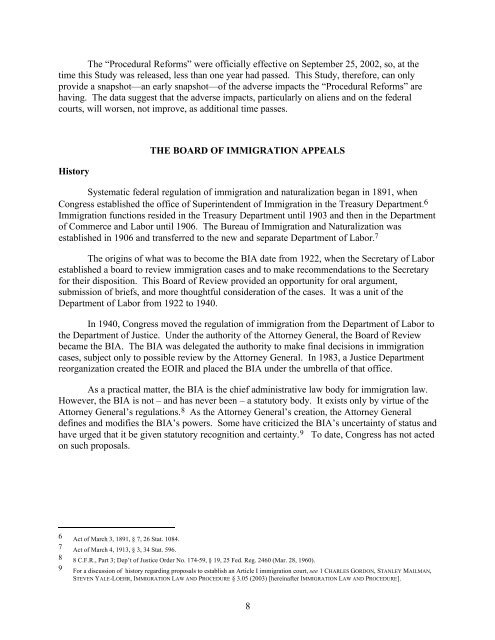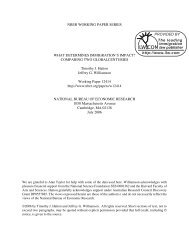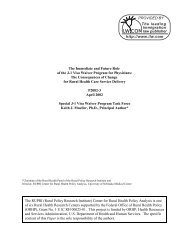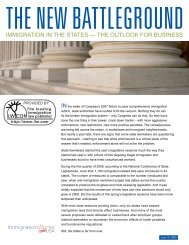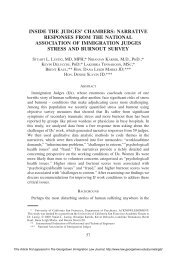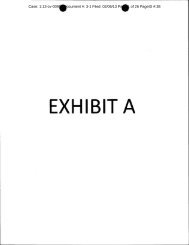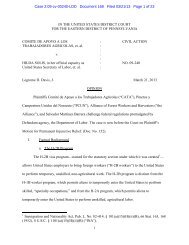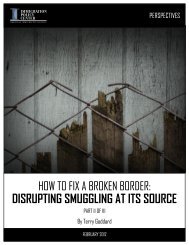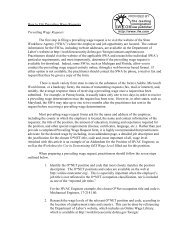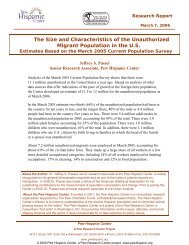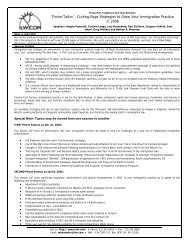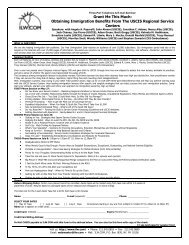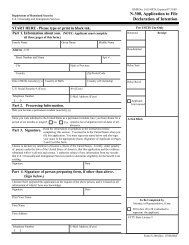Study of Board of Immigration Appeals Procedural Reforms - ILW.com
Study of Board of Immigration Appeals Procedural Reforms - ILW.com
Study of Board of Immigration Appeals Procedural Reforms - ILW.com
You also want an ePaper? Increase the reach of your titles
YUMPU automatically turns print PDFs into web optimized ePapers that Google loves.
The “<strong>Procedural</strong> <strong>Reforms</strong>” were <strong>of</strong>ficially effective on September 25, 2002, so, at the<br />
time this <strong>Study</strong> was released, less than one year had passed. This <strong>Study</strong>, therefore, can only<br />
provide a snapshot—an early snapshot—<strong>of</strong> the adverse impacts the “<strong>Procedural</strong> <strong>Reforms</strong>” are<br />
having. The data suggest that the adverse impacts, particularly on aliens and on the federal<br />
courts, will worsen, not improve, as additional time passes.<br />
History<br />
THE BOARD OF IMMIGRATION APPEALS<br />
Systematic federal regulation <strong>of</strong> immigration and naturalization began in 1891, when<br />
Congress established the <strong>of</strong>fice <strong>of</strong> Superintendent <strong>of</strong> <strong>Immigration</strong> in the Treasury Department. 6<br />
<strong>Immigration</strong> functions resided in the Treasury Department until 1903 and then in the Department<br />
<strong>of</strong> Commerce and Labor until 1906. The Bureau <strong>of</strong> <strong>Immigration</strong> and Naturalization was<br />
established in 1906 and transferred to the new and separate Department <strong>of</strong> Labor. 7<br />
The origins <strong>of</strong> what was to be<strong>com</strong>e the BIA date from 1922, when the Secretary <strong>of</strong> Labor<br />
established a board to review immigration cases and to make re<strong>com</strong>mendations to the Secretary<br />
for their disposition. This <strong>Board</strong> <strong>of</strong> Review provided an opportunity for oral argument,<br />
submission <strong>of</strong> briefs, and more thoughtful consideration <strong>of</strong> the cases. It was a unit <strong>of</strong> the<br />
Department <strong>of</strong> Labor from 1922 to 1940.<br />
In 1940, Congress moved the regulation <strong>of</strong> immigration from the Department <strong>of</strong> Labor to<br />
the Department <strong>of</strong> Justice. Under the authority <strong>of</strong> the Attorney General, the <strong>Board</strong> <strong>of</strong> Review<br />
became the BIA. The BIA was delegated the authority to make final decisions in immigration<br />
cases, subject only to possible review by the Attorney General. In 1983, a Justice Department<br />
reorganization created the EOIR and placed the BIA under the umbrella <strong>of</strong> that <strong>of</strong>fice.<br />
As a practical matter, the BIA is the chief administrative law body for immigration law.<br />
However, the BIA is not – and has never been – a statutory body. It exists only by virtue <strong>of</strong> the<br />
Attorney General’s regulations. 8 As the Attorney General’s creation, the Attorney General<br />
defines and modifies the BIA’s powers. Some have criticized the BIA’s uncertainty <strong>of</strong> status and<br />
have urged that it be given statutory recognition and certainty. 9 To date, Congress has not acted<br />
on such proposals.<br />
6 Act <strong>of</strong> March 3, 1891, § 7, 26 Stat. 1084.<br />
7 Act <strong>of</strong> March 4, 1913, § 3, 34 Stat. 596.<br />
8 8 C.F.R., Part 3; Dep’t <strong>of</strong> Justice Order No. 174-59, § 19, 25 Fed. Reg. 2460 (Mar. 28, 1960).<br />
9 For a discussion <strong>of</strong> history regarding proposals to establish an Article I immigration court, see 1 CHARLES GORDON, STANLEY MAILMAN,<br />
STEVEN YALE-LOEHR, IMMIGRATION LAW AND PROCEDURE § 3.05 (2003) [hereinafter IMMIGRATION LAW AND PROCEDURE].<br />
8


